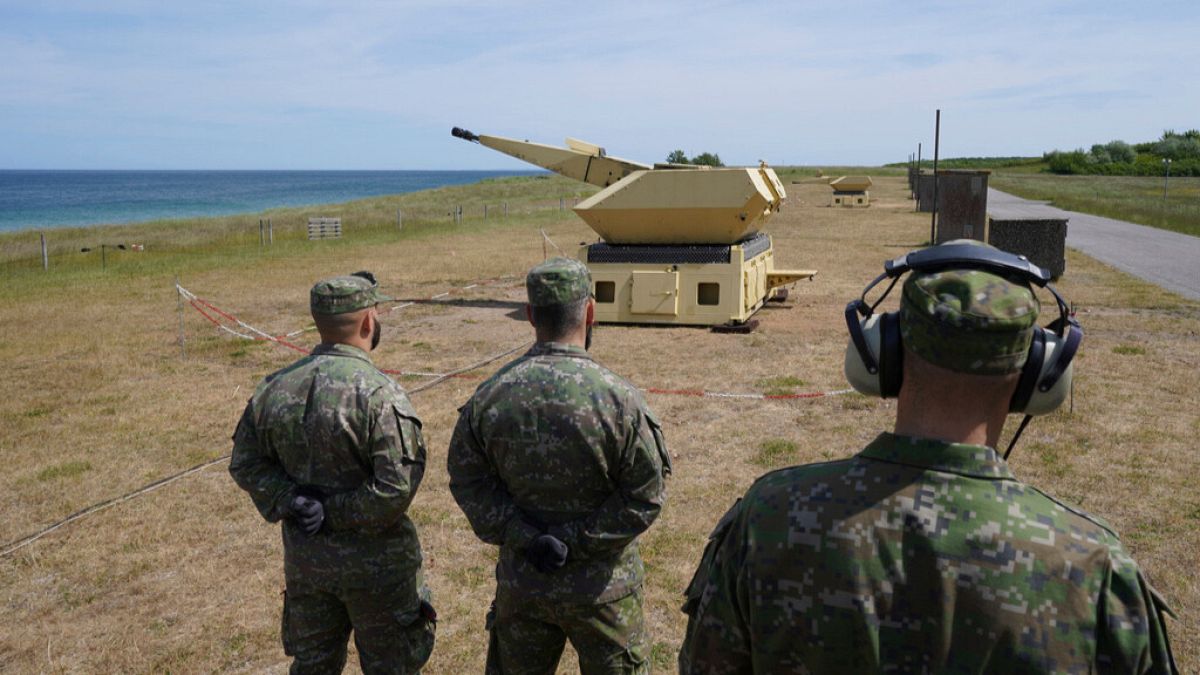Education
As States Confront a Reading Crisis in Schools, New York Lags Behind

Miguel and Jessica Millan knew something was wrong: Their 6-year-old son could not read. He could not remember the alphabet. But he was still being passed through grades.
Teachers and administrators in their suburban Rochester, New York district assured them, “He’ll catch up. It’s normal for boys to be like that,” Mr. Millan said. Finally, in third grade, they sought outside help and their son was diagnosed with dyslexia.
“Nobody ever said to us, ‘We see there’s a problem and we need to address it,’” said Mr. Millan, who transferred Alejandro, now 13, to a private school.
After a decade of stagnation on reading tests and in the wake of pandemic learning disruptions, states and school districts have begun to acknowledge that they have long failed to properly teach pupils to read. Nearly every state in the nation has passed laws on reading and literacy, a recent analysis found. New York City, the nation’s largest school system, began a sweeping curriculum overhaul this spring.
But at the state level, New York, once a national leader in education reform, is behind, according to a growing chorus of experts, families and educators. They say leaders are doing little to meet the moment, leaving students like Alejandro to struggle when districts resist change.
New York’s declines in fourth grade reading scores were double the national average last year on a major national test, leaving it tied in 32nd place with five other states. Even so, many local districts have retained teaching approaches that experts criticize for including too little focus on core reading skills, and that allow students to fall through the cracks.
More New York parents have begun raising the alarm at local school board meetings. Lawmakers have pushed for Albany and the state Education Department to take a stronger hand. And one influential education policy group recently declared that state officials are failing to use “their power and influence to prioritize literacy.”
“What’s missing for me is the leadership from the state,” said Dia Bryant, the executive director of the Education Trust New York, the policy group. “These are people I’m expecting, and I think who the public expects, to be leading the charge on this.”
“But New York is doing nothing,” she added.
Elsewhere around the country, state bills passed between 2019 and 2022 have often centered on teacher training or improving screenings to identify children who could fail to learn to read, according to the recent analysis. Some sought to ban “three-cueing,” a flawed strategy that guides children to use picture clues to guess words.
New York was one of five states to enact no laws during the same period. In the state’s May executive budget, literacy largely went unmentioned.
Education officials have released learning standards on literacy — which outline the skills students are expected to hold, and are rooted in the science of how children learn to read — along with guidance for aligning curriculum to them. Still, some experts worry that many of New York’s 700 districts are not making adequate changes in response, and argue more could be done to identify faulty approaches, and steer schools away from them.
In Buffalo, Rochester and Syracuse, some of the states’s largest districts, more than 8 in 10 children fail annual reading tests. But some major cities, along with smaller urban districts like New Rochelle and Newburgh and wealthier suburban counties, still use teaching materials that experts say are low-quality choices, according to survey from The Education Trust.
A spokeswoman for Gov. Kathy Hochul said in a statement that she “is committed to supporting a world-class education system,” pointing to increases in state aid for public schools and $100 million in matching funds in the state budget for districts to address pandemic challenges like learning loss.
James N. Baldwin, the senior deputy commissioner for education policy, said the criticisms of education officials reflect “a level of ignorance about the level of activity that has happened here,” pointing to the state’s learning standards, as well as curriculum experts and a range of support offerings that the state makes available to districts.
“What we feel is that you can’t mandate your way out of a literacy crisis,” Mr. Baldwin said. ”
Early reading experts note that new laws or state guidance alone may not fix all issues.
Legislative efforts in other states have often not given attention to skills like oral language and writing, or to the support that groups like English language learners need. Curriculum overhauls have faced backlash from educators, while other policies, like holding children back in third grade if they fail reading tests, have been intensely debated by educators, researchers and parents alike.
State leaders including Betty A. Rosa, the education commissioner, have argued that because New York districts have wide latitude to choose their curriculums, their options to achieve change are limited.
“The Regents have not turned their back on this,” Ms. Rosa said about the push for science-based instruction at a public hearing this year, referring to the board that oversees the state Education Department. “But at the same time, they’re local decisions.”
Still, Susan Neuman, a former U.S. assistant secretary for elementary and secondary education, said that legislation and state action can play a crucial role in shifting instruction. But in New York, she said, state leaders have been “strikingly silent” on the issue.
Some advocates point to measures taken by other states with robust local control.
California, for example, has deployed reading coaches to the state’s highest-poverty schools, and assigned two new statewide literacy directors with helping districts improve. In Massachusetts, officials are trying to create incentives for change, offering grants for curriculum and training changes that give priority to districts where teaching materials are low quality.
“If we had a district that was teaching that the Holocaust or slavery didn’t exist, would we say ‘local control’?” asked Robert Carroll, an assemblyman who represents northwest Brooklyn and who has been at the forefront of the Legislature’s reading efforts, particularly on dyslexia. “What is the point of having a state Education Department if it won’t step in when there’s a five-alarm fire?”
In Albany, lawmakers are expected to reintroduce several reading-related bills that were not brought to full votes this year. They include legislation to require that private health insurers cover costs for dyslexia evaluations, and to mandate that state teacher education programs offer instruction in the science of reading.
As students’ academic recovery stagnates, more families have called for change.
In Western New York’s Greece district, Tianna Johnson said her daughter, Brennae, often made high honor roll at her middle school. She was also good at pronouncing the words when she read. But Ms. Johnson said her daughter struggled with understanding the meaning of stories.
Ms. Johnson eventually decided to home-school Brennae, now 15, in eighth grade, and said the principal offered a candid admission, telling her: “The district hadn’t been producing good readers or writers for a while.”
“They’d never told us, and were having me thinking she was excelling,” Ms. Johnson said. “I completely lost trust in the system.”
Kitty Bennett contributed research.

Education
Four Fraternity Members Charged After a Pledge Is Set on Fire

Four fraternity members at San Diego State University are facing felony charges after a pledge was set on fire during a skit at a party last year, leaving him hospitalized for weeks with third-degree burns, prosecutors said Monday.
The fire happened on Feb. 17, 2024, when the Phi Kappa Psi fraternity held a large party at its house, despite being on probation, court documents show. While under probation, the fraternity was required to “demonstrate exemplary compliance with university policies,” according to the college’s guidelines.
Instead, prosecutors said, the fraternity members planned a skit during which a pledge would be set on fire.
After drinking alcohol in the presence of the fraternity president, Caden Cooper, 22, the three younger men — Christopher Serrano, 20, and Lars Larsen, 19, both pledges, and Lucas Cowling, 20 — then performed the skit, prosecutors said.
Mr. Larsen was set on fire and wounded, prosecutors said, forcing him to spend weeks in the hospital for treatment of third-degree burns covering 16 percent of his body, mostly on his legs.
The charges against Mr. Cooper, Mr. Cowling and Mr. Serrano include recklessly causing a fire with great bodily injury; conspiracy to commit an act injurious to the public; and violating the social host ordinance. If convicted of all the charges, they would face a sentence of probation up to seven years, two months in prison.
Mr. Larsen himself was charged. The San Diego County District Attorney’s office said that he, as well as Mr. Cooper and Mr. Cowling, also tried to lie to investigators in the case, deleted evidence on social media, and told other fraternity members to destroy evidence and not speak to anyone about what happened at the party.
All four men have pleaded not guilty.
Lawyers representing Mr. Cooper and Mr. Cowling did not immediately respond to messages requesting comment on Tuesday. Contact information for lawyers for Mr. Serrano and Mr. Larsen was not immediately available.
The four students were released on Monday, but the court ordered them not to participate in any fraternity parties, not to participate in any recruitment events for the fraternity, and to obey all laws, including those related to alcohol consumption.
The university said Tuesday that it would begin its own administrative investigation into the conduct of the students and the fraternity, now that the police investigation was complete.
After it confirmed the details, the dean of students office immediately put the Phi Kappa Psi chapter on interim suspension, which remains in effect, college officials confirmed on Tuesday.
Additional action was taken, but the office said it could not reveal specifics because of student privacy laws.
“The university prioritizes the health and safety of our campus community,” college officials said in a statement, “and has high expectations for how all members of the university community, including students, behave in the interest of individual and community safety and well-being.”
At least half a dozen fraternities at San Diego State University have been put on probation in the last two years, officials said.
Education
Video: Several Killed in Wisconsin School Shooting, Including Juvenile Suspect

new video loaded: Several Killed in Wisconsin School Shooting, Including Juvenile Suspect
transcript
transcript
Several Killed in Wisconsin School Shooting, Including Juvenile Suspect
The police responded to a shooting at a private Christian school in Madison, Wis., on Monday.
-
Around 10:57 a.m., our officers were responding to a call of an active shooter at the Abundant Life Christian School here in Madison. When officers arrived, they found multiple victims suffering from gunshot wounds. Officers located a juvenile who they believe was responsible for this deceased in the building. I’m feeling a little dismayed now, so close to Christmas. Every child, every person in that building is a victim and will be a victim forever. These types of trauma don’t just go away.
Recent episodes in Guns & Gun Violence
Education
Video: Biden Apologizes for U.S. Mistreatment of Native American Children

new video loaded: Biden Apologizes for U.S. Mistreatment of Native American Children
transcript
transcript
Biden Apologizes for U.S. Mistreatment of Native American Children
President Biden offered a formal apology on Friday on behalf of the U.S. government for the abuse of Native American children from the early 1800s to the late 1960s.
-
The Federal government has never, never formally apologized for what happened until today. I formally apologize. It’s long, long, long overdue. Quite frankly, there’s no excuse that this apology took 50 years to make. I know no apology can or will make up for what was lost during the darkness of the federal boarding school policy. But today, we’re finally moving forward into the light.
Recent episodes in Politics
-

 Business1 week ago
Business1 week agoThese are the top 7 issues facing the struggling restaurant industry in 2025
-

 Culture1 week ago
Culture1 week agoThe 25 worst losses in college football history, including Baylor’s 2024 entry at Colorado
-

 Sports1 week ago
Sports1 week agoThe top out-of-contract players available as free transfers: Kimmich, De Bruyne, Van Dijk…
-

 Politics6 days ago
Politics6 days agoNew Orleans attacker had 'remote detonator' for explosives in French Quarter, Biden says
-

 Politics5 days ago
Politics5 days agoCarter's judicial picks reshaped the federal bench across the country
-

 Politics4 days ago
Politics4 days agoWho Are the Recipients of the Presidential Medal of Freedom?
-

 Health3 days ago
Health3 days agoOzempic ‘microdosing’ is the new weight-loss trend: Should you try it?
-

 World1 week ago
World1 week agoIvory Coast says French troops to leave country after decades














